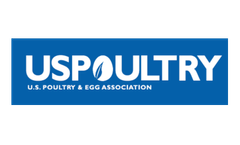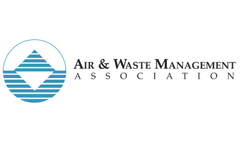Cafo Operator Articles & Analysis
16 news found
According to REACH, over the past 15-20 years, industrial animal operations have grown in Duplin County and the state as a whole, with North Carolina moving from fifteenth to second in hog production in the United States. REACH has worked with residents, researchers, government agencies and, in some cases, representatives from the industrial animal industry, to collaborate on ...
To help provide answers as to why Concentrated Animal Feeding Operations (CAFOs) are an important part of the poultry industry, U.S. Poultry & Egg Association (USPOULTRY) has created a series of six short videos. ...
“This agreement, developed after extensive public and industry input, commits IDNR to making needed and achievable improvements to the system that keeps CAFOs compliant with the CWA. Iowans who operate a world-class livestock sector will continue to thrive in a first-rate permitting and inspection ...
About 20,000 concentrated animal feeding operations - or CAFOs - operated in the United States in 2003, according to an EPA document. These facilities house chickens, hogs, or cattle inside buildings, often thousands at a time, with pits beneath them to catch animal waste, which is often used for crop fertilizer. CAFOs are found ...
EPA is seeking public comment on the Iowa Department of Natural Resources’ (IDNR) response to EPA’s initial findings from its informal investigation of IDNR’s permit and compliance program for concentrated animal feeding operations (CAFOs). IDNR submitted its response to EPA on Sept. 11, 2012, which outlines a number of actions to improve its ...
EPA’s inspection program for concentrated animal feeding operations (CAFOs), winter feeding areas, aerial overflights, medium-sized CAFOs, nutrient management plans and manure stockpiles will be discussed. EPA staff will also review the selection of CAFOs for inspection, flyover practices and details about ...
EPA’s initial findings from an informal investigation of the Iowa Department of Natural Resources’ (IDNR) permit program for concentrated animal feeding operations (CAFOs) disclose several correctable deficiencies. EPA’s investigation was carried out in response to a petition for withdrawal of the National Pollutant Discharge Elimination System ...
EPA Region 7 representatives will host a public informational meeting for livestock producers about the Agency’s inspection program for concentrated animal feeding operations (CAFOs) on Monday, July 2, in Lexington, Neb. EPA Region 7’s inspections are part of an increased national emphasis on ending harmful discharges of pollutants from ...
Petersen-Bubke was confining approximately 1,050 cattle at the time of the inspection, which made it subject to regulation as a large Concentrated Animal Feeding Operation (CAFO). However, the feedlot did not have a necessary National Pollutant Discharge Elimination System (NPDES) permit, nor had it applied for one, as required by the Clean Water Act. ...
A new water discharge permit for Concentrated Animal Feeding Operations (CAFOs) will help protect Idaho’s rivers, lakes and streams from animal waste, according to the U.S. ...
For more information on the National Pollutant Discharge Elimination System (NPDES) Concentrated Animal Feeding Operation (CAFO) program, please visit: http://cfpub.epa.gov/npdes/index.cfm and click on the following links, NPDES Information, NPDES Permit Program Basics, and concentrated animal feeding operations. ...
At the time of EPA’s inspection of Moran Beef, the facility was confining approximately 1,485 cattle in its open lot and confinement barn operations. A Concentrated Animal Feeding Operation (CAFO) with both open lots and confinement barns is subject to regulation under the Clean Water Act as a “Large CAFO” if ...
The investigators also analyzed public health data from three public health districts with similar land areas, populations, and agricultural bases, but with varying numbers of swine confined animal feeding operations (CAFOs), a typical source of swine manure. Their analysis of annual reports of illnesses caused by Campylobacter and Salmonella from 1993 through ...
Previous rules required a CAFO operator to use an NMP for controlling manure, but the regulation builds on that by requiring the NMP to be submitted with the permit application. ...
EPA is proposing for public comment the extension of certain compliance deadlines for concentrated animal feeding operations (CAFOs). One extension applies to water permit application deadlines for facilities that EPA defined as CAFOs for the first time in 2003. The other extension applies to certain CAFOs that have to develop ...
Untitled Document Pittsburgh, PA (July 25, 2005) - By Friday, July 29, operators of Concentrated Animal Feeding Operations (CAFOs) must decide whether to participate in the Air Compliance Agreement issued by the U.S. ...




